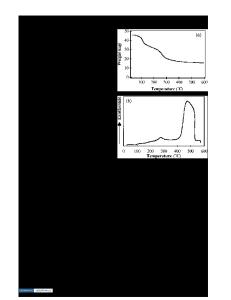Importance of soft solution processing for advanced inorganic materials
- PDF / 283,600 Bytes
- 7 Pages / 612 x 792 pts (letter) Page_size
- 28 Downloads / 319 Views
MATERIALS RESEARCH
Welcome
Comments
Help
Importance of soft solution processing for advanced inorganic materials Masahiro Yoshimura Center for Materials Design, Materials and Structures Laboratory, Tokyo Institute of Technology, 4259 Nagatsuta, Midori-ku, Yokohama 226, Japan (Received 17 September 1997; accepted 18 November 1997)
Based upon the analysis of materials cycling and processing on the earth, a thermodynamic concept for energetical and environmental problems has been proposed. It concludes that solution processing using aqueous solutions should be the most important processing even for advanced materials. According to this concept, energetical and environmental features of soft solution processing (SSP) are discussed in general, using also some particular examples, such as BaTiO3 . Applications of the SSP are shown with special emphasis on hydrothermal and/or electrochemical synthesis of thin films and integration issues. Soft solution processing allows one to fabricate in aqueous solutions shaped/sized/oriented ceramics in only one step, without excess energies for firing/sintering or melting and without expensive equipment, providing an environmentally friendly route for the preparation of advanced ceramic materials.
I. MATERIALS AND SUBSTANCES
In order to discuss the processing of materials, our consideration should start from a precise definition of such terms as “substance” and “material.” “Substance” should have (i) a particular chemical composition, (ii) a particular physical state including structure, and (iii) particular properties based upon its composition and structure. In these regards, we can distinguish, for example, diamond and graphite as different substances. However, when we consider diamond as a material, we must take into account additional factors. Since “material” should be defined as a substance mostly in solid state which is used or to be used for certain application(s), we must add the following features to define “material”: (iv) a particular shape, and (v) a certain size. Moreover, (vi) location and (vii) orientation may be required in certain applications of materials. For example, diamond substrates for electronic applications should have a completely different shape/size/location from diamond-cutting wheels, abrasives, or jewelry. Since both processing routes, i.e., (a) synthesis of the substances and (b) shape-forming of the materials, require particular technologies and consume a considerable amount of resources and energies, we must consider total easiness/difficulties of materials processing from the technological, economical, and environmental points of view. II. ENERGETICAL AND ENVIRONMENTAL FEATURES OF MATERIALS PROCESSING
Modern human society has been sustained by remarkable development of advanced artificial materials 796
http://journals.cambridge.org
J. Mater. Res., Vol. 13, No. 4, Apr 1998
Downloaded: 18 Mar 2015
and by huge consumption of energies and resources. Since we cannot stop using them now and in the near future, the wastes of materials, chemi
Data Loading...









